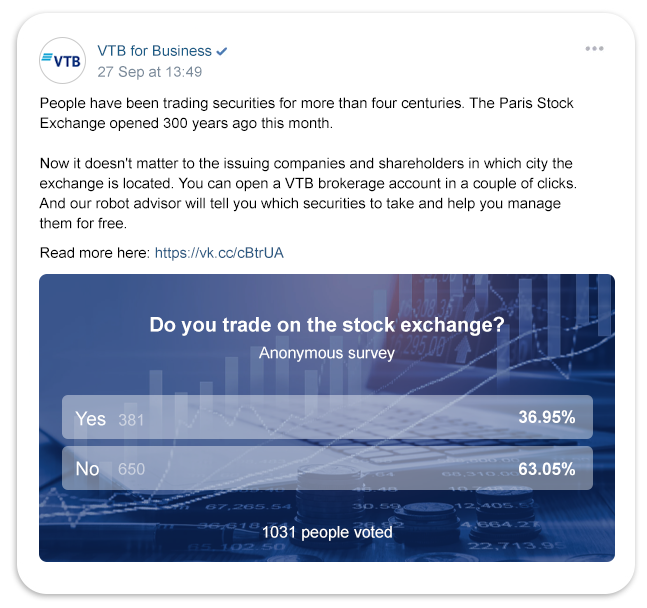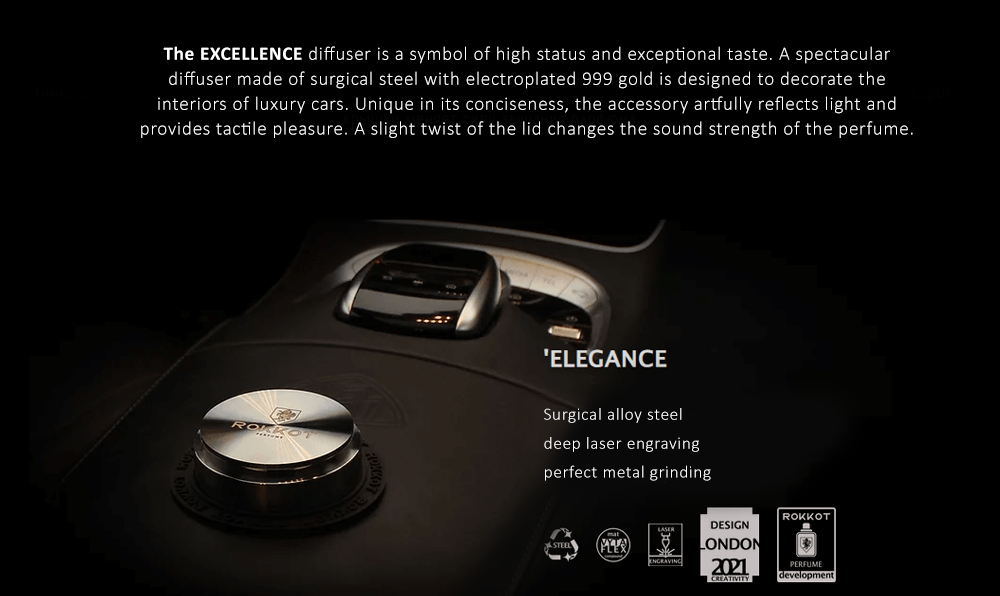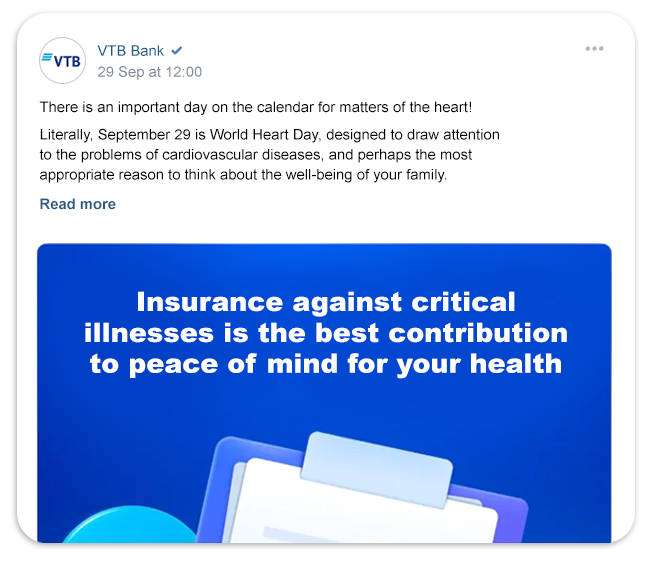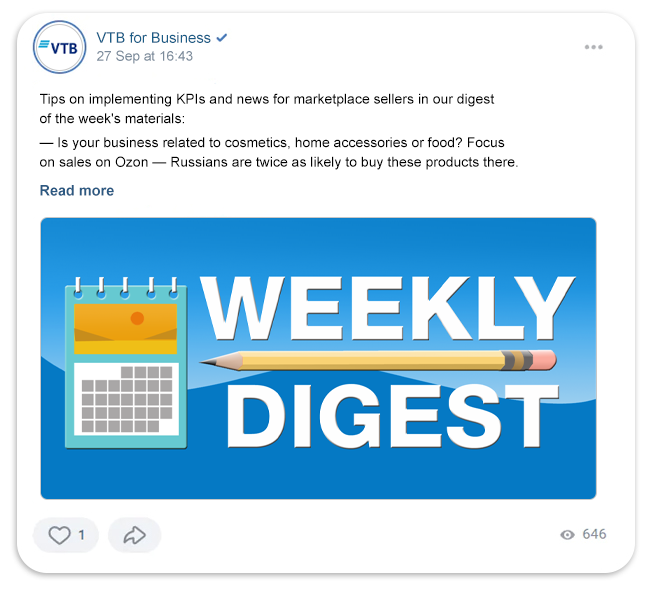What is Tone of Voice and why does a brand need it?
The modern market is overflowing with various offers and it is becoming more difficult for companies to win the attention and trust of consumers. One of the key elements that allows you to stand out in your niche is the Tone of Voice - the style and way the brand communicates with the audience
.jpg&w=3840&q=75)
Tone of voice is a unique manner of marketing communications of a brand with an audience, which includes a set of linguistic, stylistic and intonation characteristics. That is, in this case, we are talking not only about words, but also about intonation, emotional coloring, and style.
Every hunter wants to know where the pheasant is, and every brand wants to know what to do to be remembered by its audience and become recognizable. And for this, it is extremely important to speak to the audience in a language they understand. It is the tone of voice (or TOV) that sets this very “voice” of the brand, which makes communications recognizable and memorable.
Imagine that your brand is a living person. How will it communicate with its audience - strict and formal? Friendly and relaxed? Or maybe eccentric and creative? The answer to this question is its tone of voice. And businesses should have one too.

What does Tone of voice consist of?
Tone of voice is a multifaceted phenomenon that consists of several key elements. Let's look at them in more detail.
- Personality of the brand: any brand is not a set of goods or services, it is a personality, a conventional person with their own character and manner of communication. This is the secret of a truly strong tone of voice, it should reflect the individuality of the brand as much as possible. There are brands that personify their personality to the utmost, creating characters. For example, on the website of the company "Aviasales" assistant Dasha answers questions:

- Language and style: this is the choice of words, expressions and grammatical constructions. It can be formal or informal, colloquial or professional, simple or complex. A strict, academic style would be suitable for a scientific publication or a consulting agency. At the same time, a youth clothing brand can choose a simpler, more emotional language using slang, wordplay, etc.
- Intonation: this is the emotional coloring of speech if the company's marketing involves communication via video and audio. It can be friendly, serious, inspiring, ironic, humorous, respectful, etc. Imagine how the TOV of a food delivery brand will "sound" - most likely, it will be fast, energetic and with a hint of humor. But a solid insurance brand will most likely prefer a more measured and confident "voice".
- Text structure: this is the organization of textual information. It can be sequential and logical or more free and improvised.
- Visual Elements: Tone of voice can also be seen in the visual elements of a brand, such as font, colors, images, illustrations.
- Advertising formats, online and offline: Tone of voice should be present at all points of interaction between the brand and the audience, be it online or offline. At the same time, TOV should be adaptive.
All of the above components together create a unique and memorable “voice” of the brand that will work across all communication channels.
Why does a brand need Tone of voice ?
Today, both large and medium-sized brands are trying to form their own “voice” and maintain it.
If a company sends funny memes and uses informal language in its newsletters, and the customer support greets the client as "Hello, Ivan Alekseevich. How can I help you?", this causes dissonance in the user. This approach breaks the client's unified perception of the brand, which means it prevents the company from achieving its goals.
What tasks does ToV solve:
- Increased brand awareness. Imagine a large brand that does not have a clearly defined manner of communication. Without its own unique voice, it will look faceless and drown in information noise. It will have a hard time growing and gaining recognition. On the contrary, a company with a bright, memorable TOV will be recognizable, even if the scale of its business is much smaller.
- Strengthening the emotional connection with the audience. The right tone of communication evokes the right emotions in people and encourages them to buy. If the TOV is warm, friendly and understandable, the audience will be much more willing to respond to your messages. On the contrary, a dry, formal style will repel people... But this is not certain. Being friendly and warm is not recommended for funeral homes and investment companies - it will be inappropriate. And it is precisely the inappropriate that repels most often.
- Increased engagement and loyalty. Brands that are able to build an emotional connection with consumers through tone of voice receive much higher audience engagement. Their messages are more often reposted, commented on and discussed on social networks. And regular customers become true brand followers who will recommend it to their friends. Increasing engagement means becoming one of your own, and this is exactly what a recognizable and relevant TOV solves.
- Stands out from competitors. In a highly competitive market, tone of voice can be a strong factor for differentiation. After all, if the voice is radically different from what is generally accepted in the industry, it will immediately distinguish the company from other players. Such uniqueness will increase the brand's memorability and its attractiveness to the target audience.
- Demonstrates brand values. When a brand sells children's toys, it communicates softly and politely. But if it promotes youth clothing, it can afford informal communication and slang. It all depends on the audience: for some, an unusual message will be offensive, and for others, it will be a sign that "everyone is one of us." Therefore, in order for ToV to look organic, you need to know your target audience well. When a brand has a clear, well-thought-out tone of voice, the audience reads the values. If they are close to the user, then he remembers and notices the brand, gets involved in communication. And this is exactly what the company needs.
- Increased sales and business efficiency. As a result, a correctly constructed tone of voice, solving all the previous tasks, has a positive effect on the company's commercial indicators. A recognizable and beloved brand by consumers will always have an advantage when choosing goods or services. And high audience loyalty will guarantee stable sales and overall growth in business efficiency.
What is the tone of voice?
If we take any well-known global brand, it will definitely have a clearly defined tone of voice. It will be traced in all communication channels.
Conventionally, all ToV variants can be divided into several types:
- Professional and businesslike. The focus is on the precision of wording, conciseness, and facts. Restrained, strict, and structured. Emphasizes the competence and reliability of the brand. Suitable for the B2B sector, financial, insurance, and legal organizations. It is important for them to speak simply about complex things and maintain the precision of wording.

- Educational. In this case, the brand acts as an expert, helps the audience learn something, avoid mistakes. Regularly gives advice and recommendations. Friendly and informal. Simple, conversational and close to everyday communication. Used to create an atmosphere of trust and ease. Suitable for retail, restaurants and companies focused on a wide range of customers.
- Playful and humorous. Light, casual style with elements of humor. Creates an emotional response and is memorable thanks to jokes, makes interaction with the brand fun and relaxed. Suitable for companies targeting a young audience, entertainment and creative agencies.
- Emotional and inspiring. Warm, friendly, motivating. Suitable for companies that create an atmosphere of comfort, inspiration and coziness, such as family restaurants, spa centers, hotels, recreation centers. This tone helps to evoke pleasant emotions in the audience, the desire to relax and unwind.

- Bold and provocative. Suitable for brands with a young audience and companies promoting non-standard solutions. Such ToV often helps to quickly attract the attention of consumers, but at the same time can cause a wave of hate and criticism. You need to be careful with it and always be able to balance on the edge, but not cross the line. And often, as in the case of Burger King, they are also provocative.

How to Create a Tone of Voice for Your Brand
- Study your target audience: understand who your customers are, what their needs, expectations, preferences, values and communication style are. Imagine that you are developing a TOV for a youth social network - it is better to stay away from a dry academic style here. But a little slang, humor and liveliness are what you need!
- Analyzing values, positioning and competitive environment. The next important step is to dive into the essence of the brand itself. What values does it carry? How does it position itself in the market? What do its competitors do in terms of tone of voice? All this data will serve as a starting point for creating a unique voice that will harmoniously reflect the brand's DNA and distinguish it from other market players. In general, you need to understand what messages you want to convey to the audience. For example, if you are working on a TOV for an eco-friendly household chemicals brand, such elements as care, responsibility, and aspiration for change will be appropriate - unlike many competitors who rely on classic "selling" marketing.
- Create a tone of voice guide: Describe what your tone of voice should be. Provide specific examples so that all employees understand how they should communicate on behalf of the brand.
- Use tone of voice in all communications: Make sure TOV is used consistently across all marketing materials, your website, social media, emails, and customer communications.
- Monitoring and adjustment. The brand's tone of voice is not a dogma, not a once-and-forever structure, but a living organism that needs to be regularly "run" through checks and adjusted to the changing demands of the audience. Therefore, you will have to constantly monitor people's reactions, track engagement metrics and, if necessary, make adjustments.
Over time, you may need to adjust the tone, style, or even the character of your brand to ensure it remains as relevant and resonant as possible with your customers.
And that's okay — the main thing is not to be afraid to experiment and evolve with your audience. This is how, step by step, you will approach creating a powerful, cohesive brand tone of voice.
Of course, it’s not an easy job, but it’s worth it – because the right brand voice can become a powerful competitive advantage and truly bring you closer to your audience.
How to implement ToV in all communication channels
This is a critical step. If you fail to do this, the beautiful ToV you have developed will remain on paper.
- Describe your tone of voice in as much detail as possible. Demonstrate the brand's character scale, describe its persona. Give examples of how to write and how not to write.
- Decide how you will address: "you" or "you". It is important that the rule is followed in social networks, in newsletters, and in personal correspondence with clients.
- Designate stop words. For example, you do not use the word "problem" or diminutive adjectives: pretty, pretty.
- Make a presentation. Explain why it is needed and how it will help your company. Give examples of famous brands with a cool tone of voice. If a team participated in the development of ToV, then implementing the rules will be much easier.
- Send out memos. Let everyone responsible for customer communications have a document with the ToV outlined. Ideally, this is a large brand book that contains all the information about the company's positioning and mission.
- Track progress. Read newsletters, browse social media, the website and landing pages. Correct errors, discuss with the team and add rules if necessary.
Important: ToV is a branding element. It works only in conjunction with design, fonts, and color. If you are changing the “voice” of an existing brand, it is worth evaluating the design as well: will it correspond to the new concept?
Example: Premium perfume for cars. Design, font, text - everything corresponds to a single style. Bright colors and cheerful fonts would be out of place here.

Can a brand use more than one TOV?
Yes, a company can use multiple TOVs, but only if it has audience segments that are distinct from each other and can speak “different languages.”
In this case, it is important not to mix messages with different TOVs together and to create separate channels for communication with such users.
For example, banks are aimed at a wide audience, but many of them provide services for businesses separately. In this case, you can use several TOVs, adapting each of them to a separate segment of the target audience. This is what VTB Bank does, which has a VKontakte group for all bank clients and a separate community for entrepreneurs. The communication styles in them are different. In the group for all clients, the bank writes as simply and clearly as possible, does not use complex terms and slang expressions. The TOV is restrained and friendly, designed for a wide audience.

In the business group, the bank uses terminology and slang that are incomprehensible to most ordinary bank clients, but at the same time familiar to entrepreneurs.

Let's sum it up
- Tone of Voice — tonality, brand voice — a unified style, rules of communication with the target audience. It helps to find “your own” and speak the same language with them.
- A well-chosen ToV conveys the necessary emotions, talks about the values of the product and the company. Ideally, it is developed (including using the character method) before the launch and promotion of the product
- The voice can be different: “serious” and “provocative”, “witty” and “familiar”, “mentoring” and “friendly”. The choice depends not only on the audience, but also on the topic and product.
- To form a ToV, you need to study your competitors, determine your USP, and create an audience profile.
- It is necessary to follow a single ToV across all communication channels.
